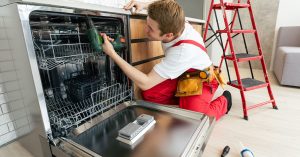Caring for pets takes more than love. It means paying attention to their daily behavior, diet, and health changes. Many of us want to keep our animals comfortable and safe, yet busy schedules make regular vet visits difficult. That is where in-home pet health checkups help. They make it easier for pets to receive care in a calm, familiar space. By understanding how these visits work and what to expect, we can help our pets stay healthy without unnecessary stress.
Why In-Home Checkups Matter
When pets visit a clinic, they often face new smells, bright lights, and other animals. These changes can cause stress or fear, especially for older pets or those with anxiety. In-home checkups create a more relaxed setting. Our pets stay in familiar surroundings, which helps the vet see their natural behavior and comfort level.
Additionally, at-home visits allow us to discuss habits or routines that might go unnoticed during a quick clinic appointment. The veterinarian can observe food bowls, bedding, litter boxes, or outdoor spaces. This direct insight often leads to better health advice tailored to the pet’s actual environment.
For owners managing multiple pets or mobility challenges, in-home visits save travel time and reduce disruption. Through mobile veterinary care, we can receive professional attention without leaving home. This approach blends convenience with attentive, personalized service.
What to Expect During an In-Home Pet Checkup
Each visit starts with a review of the pet’s history. The veterinarian asks about eating habits, energy levels, sleep, and any changes we notice. These conversations guide the exam and ensure no concerns are overlooked.
Next comes the physical examination. It includes checking weight, coat condition, teeth, ears, eyes, and heartbeat. The vet might use portable tools like a stethoscope, thermometer, or small scale. Blood pressure and hydration levels can also be measured easily at home.
Vaccinations, routine lab tests, or parasite prevention treatments can be done during the same visit. This efficiency helps reduce repeated appointments. Many pets remain calmer when they are not restrained on a clinic table, allowing for a smoother and more accurate exam.
Finally, the veterinarian may offer lifestyle advice or suggest adjustments to diet and activity. These small, practical steps often improve long-term health and comfort.
Preparing for the Visit
Before the appointment, we can help by creating a quiet space for the exam. A well-lit room with enough space for the vet to work comfortably is ideal. Having our pet’s records and any recent medications ready saves time.
If our pet gets nervous around new people, gentle reassurance or a favorite toy can make a big difference. Keeping treats close by can help the vet create a positive association with the visit.
Cats may hide during unfamiliar moments, so preparing a cozy, open area or closing off escape routes helps them stay calm. For dogs, a short walk before the appointment can release extra energy.
Some pets may need to be gently held or comforted during the checkup. The goal is to make the experience as relaxed as possible. When we stay calm and patient, our pets often mirror that behavior.
Common Issues Found During At-Home Exams
Home visits often uncover health changes we might miss in daily routines. Weight fluctuations are a common finding, especially in aging pets. The vet can spot early signs of arthritis, heart disease, or dental problems that develop slowly over time.
Skin issues, allergies, or unusual grooming habits can also stand out more clearly at home. For example, the vet might notice frequent scratching, hair loss, or dull fur caused by environmental factors. Because the environment is visible, the veterinarian can recommend direct solutions such as better bedding, humidity adjustments, or safer cleaning products.
For older pets, mobility and joint health receive close attention. These visits make it easier to create exercise plans suited to the pet’s home layout. Simple steps like adding carpet runners or adjusting food bowl height can reduce pain and prevent injuries.
The Emotional Benefits for Pets and Owners
An in-home health checkup does more than track physical well-being. It strengthens trust between pets, owners, and veterinarians. Many animals behave differently in clinics because of stress or fear, which can make diagnosis harder. At home, they are often calm and open to gentle examination.
This comfort allows for better communication and more accurate observations. Owners also feel less pressure because they can ask questions in a familiar space. The visit becomes more of a partnership than a medical appointment.
There is also an emotional reward in seeing our pets at ease while receiving care. It builds a sense of confidence that we are doing everything possible to support their health. Over time, this comfort helps make future visits smoother and less stressful.
Health Monitoring Between Visits
Routine checkups work best when paired with consistent monitoring. Keeping a simple health log can be helpful. We can note eating patterns, water intake, stool consistency, and energy levels. These notes allow the veterinarian to track subtle changes over time.
For example, a gradual increase in thirst or urination might indicate kidney issues. A drop in appetite could signal dental discomfort or digestive trouble. Early detection often prevents larger problems later.
Regular brushing, dental care, and exercise also play vital roles in keeping pets strong. Setting reminders for medication or vaccination dates helps maintain routine care. These small actions extend the benefits of professional visits and help catch issues early.
Supporting Senior Pets at Home
Older pets benefit greatly from in-home checkups. Transporting them to clinics can be difficult or uncomfortable. Home visits make it possible to provide compassionate care without stress.
During these visits, the veterinarian can evaluate joint stiffness, vision changes, or dental wear. They might recommend joint supplements, new diets, or gentle physical therapy routines. Simple home adjustments such as extra rugs for traction or softer bedding can improve daily comfort.
Caring for a senior pet also involves managing chronic conditions like arthritis, diabetes, or kidney disease. The veterinarian can demonstrate how to give medications correctly or monitor symptoms between visits. These hands-on lessons help owners feel confident about at-home care.
The goal is always to improve quality of life. Regular monitoring and quick attention to small changes keep older pets happy and active longer.
How In-Home Visits Support Preventive Care
Preventive care is one of the strongest advantages of home checkups. Because the veterinarian sees pets regularly in their normal environment, they can identify early signs of trouble. Preventive attention reduces emergencies and lowers overall medical costs.
Routine blood work or parasite screenings detect issues before symptoms appear. Vaccination schedules are maintained easily since everything happens at home. The veterinarian can also review diet and body condition more accurately by observing actual food portions and feeding habits.
This proactive approach helps maintain a steady state of wellness rather than responding to illness after it develops. It also promotes long-term consistency, which is vital for both young and aging pets.
Creating a Long-Term Care Plan
Each pet has unique needs based on age, breed, and lifestyle. A long-term health plan combines regular checkups with specific actions that suit those factors. The veterinarian helps set timelines for vaccinations, dental exams, and screenings.
We can work together to design nutrition and exercise routines that support healthy weight and strong immunity. For pets with existing conditions, the plan may include more frequent visits or blood tests to monitor progress.
Consistency keeps pets healthier for longer. By following a structured schedule, owners gain peace of mind knowing that each stage of their pet’s life is supported.
If it is time to start or update a personalized plan, we can easily contact us to schedule a visit and learn more about preventive care options at home.
Tips to Make the Most of Each Visit
A successful in-home appointment depends on preparation and open communication. Before the vet arrives, writing down questions ensures that nothing important is forgotten. Topics might include behavior changes, new diets, or unusual habits.
Keeping records such as previous blood results or vaccination cards helps track progress. The veterinarian can compare them with current findings to identify trends.
It is also helpful to keep the same location for each visit. Familiar settings make pets feel safe and speed up the process. After the checkup, following the vet’s advice closely improves results and builds steady improvement.
Lastly, consistency strengthens the bond between the veterinarian, owner, and pet. Regular visits create trust and familiarity, making each exam smoother than the last.
Practical Insight: Small Habits That Make Big Differences
A few daily habits often make the biggest difference in a pet’s long-term health. Fresh water at all times supports kidney function and temperature control. Feeding high-quality food based on species and age prevents obesity and nutrient imbalance.
Playtime keeps the body active and reduces anxiety. For indoor pets, rotating toys or creating small challenges encourages mental stimulation. Grooming also goes beyond appearance; brushing distributes natural oils and helps detect early skin issues.
Even a few minutes of attention each day build awareness of what is normal for our pets. When something changes, we notice sooner and can act quickly. This ongoing care complements the benefits of professional in-home checkups.
FAQs
1. How often should pets have in-home health checkups?
Most pets benefit from annual exams. Older pets or those with ongoing conditions may need visits every six months for closer monitoring.
2. What equipment does a vet bring to an in-home visit?
The veterinarian brings portable tools such as a stethoscope, thermometer, and scales. Some carry blood testing kits, vaccines, and medications.
3. Are in-home visits safe for pets with chronic illnesses?
Yes, they are often safer. Pets with chronic issues experience less stress and avoid exposure to other animals or germs in clinics.
4. Can lab tests or vaccines be done during a home visit?
Yes, most routine vaccines and basic lab work are available during in-home checkups. The veterinarian may send samples to a lab for analysis if needed.
5. What can owners do between visits to maintain pet health?
Monitor eating, activity, and behavior. Provide clean water, balanced nutrition, and daily interaction. Contact the vet if changes appear or symptoms persist.



